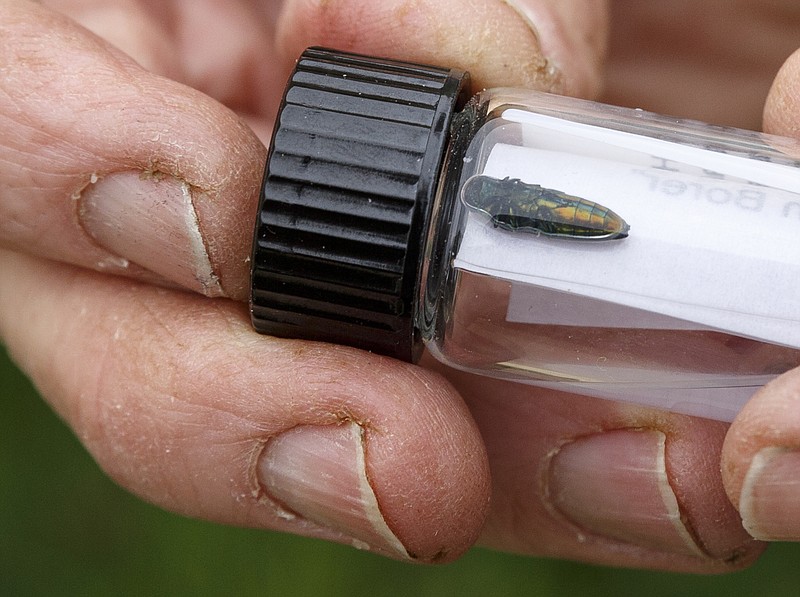Tips to stop spread of pests
Tips from the Tennessee Department of Agriculture:› Obtain firewood near the location where you will burn it. That means the wood was cut in a nearby forest, in the same county, or a maximum of 50 miles from where you’ll have your fire.› Don’t be tempted to get firewood from a remote location just because the wood looks clean and healthy. It could still harbor tiny insect eggs or microscopic fungal spores that will start a new and deadly infestation of forest pests.› Aged or seasoned wood is not considered safe to move, but commercially kiln-dried wood is a good option if you must transport firewood.› If you have already moved firewood, and you need to dispose of it safely, burn it soon and completely. Make sure to rake the storage area carefully and also burn the debris. In the future, buy from a local source.› Tell your friends and others about the risks of moving firewood.
The fight to protect East Tennessee's forests - and cities - from an invasive species continues expanding.
The emerald ash borer has been found in 47 of the state's 95 counties, while 40 counties are know to be infested with the Hemlock woolly adelgid.
Their effects on forests are widespread and well-documented, but the ash borer also poses a risk to homeowners.
An April 2016 Times Free Press article chronicled the plight of an East Chattanooga man faced with a $5,000 tab to remove four ash trees from his yard that were killed by the ash borer, lest he risk the dead trees falling on his home.
At the time, foresters had not found the species north of the Tennessee River, but Chattanooga city forester Gene Hyde said Thursday that emerald ash borers have since been found at Rivermont Park.
Ash trees are just 1-2 percent of the city's trees, Hyde said, but there are roughly 200,000 of them across public and private property in the city.
"It's here, it's spreading, it's pretty much unstoppable, and we'll have to deal with it if we have ash trees in our yards," he said.
Signs of infection are difficult to detect, because ash borer attacks usually begin high in the tree, in the middle of the crown.
"By the time it gets down to eye level where you can see the warning signs, it's been in the tree for three or four years," Hyde said. "It's an insidious little critter."
The number of Tennessee counties with an emerald ash borer presence has more than doubled since 2013.
Hemlock woolly adelgids have not been found in Chattanooga yet, Hyde said. But they are a nuisance on the surrounding mountains.
The town of Walden partnered with the state last year for the treatment, management and care of the town's hemlock trees affected by the parasite. Signal Mountain, meanwhile, has a Hemlock Conservation Task Force that has released woolly adelgid-eating beetles to supplement chemical treatments.
Woolly adelgids were found in Knoxville in 2002 and have spread across the eastern part of the state since then, according to Tennessee forest health specialist Nathan Hoover.
Chemical treatments are effective in killing woolly adelgids but are not the long-term solution for the spreading problem, Hoover said.
Beetles could be, however. The University of Tennessee maintains a lab where it produces the beetles.
"They grow them and release them in hopes they eat the adelgid, reproduce and spread to other areas," Hoover said. "Over time, it could really make an impact."
Contact staff writer David Cobb at dcobb@timesfreepress.com or 423-757-6249.
